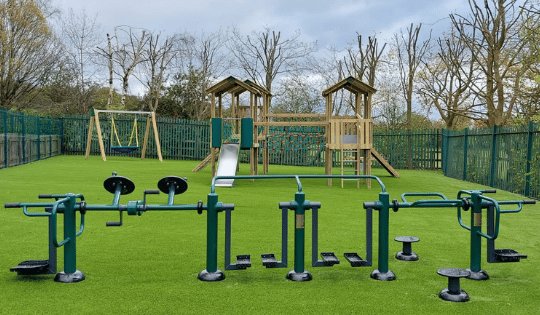Innovative Sports Equipment Design: Shaping the Future of Athletics

In the world of sports, equipment plays a crucial role in a player’s performance, safety, and overall experience. Whether it’s the precision of a tennis racket, the durability of a football helmet, or the comfort of a pair of running shoes, sports equipment design has a significant impact on how athletes perform. Over the years, advancements in technology, material science, and ergonomic design have revolutionized sports gear, making it more efficient, comfortable, and safe. This article will explore the importance of sports equipment design, its evolution, key trends, and how it continues to influence the sports industry.
The Importance of Sports Equipment Design
Sports equipment design is not just about making gear look attractive or aesthetically pleasing—it’s about creating products that enhance performance, protect athletes from injury, and ensure maximum comfort during physical activity. Well-designed sports equipment can give athletes the edge they need to perform at their best, whether they're training, competing, or recovering.
-
Performance Enhancement: The primary goal of sports equipment design is to improve the athlete's performance. For example, lightweight materials in running shoes help enhance speed, while aerodynamic helmets reduce wind resistance in cycling.
-
Safety Considerations: Equipment design also prioritizes athlete safety. Helmets, pads, and protective gear are engineered to absorb impact, reduce the risk of concussions, and prevent serious injuries.
-
Comfort and Fit: Comfort is an essential factor in sports equipment design. The right fit can prevent discomfort and distraction during physical activity. For instance, soccer cleats that fit well enhance traction and reduce the risk of blisters.
The Evolution of Sports Equipment Design
The design of sports equipment has evolved significantly over the years, driven by both advancements in technology and the growing demands of athletes.
-
Early Beginnings: In the early days of sports, equipment was relatively simple and made from basic materials like wood, leather, and metal. Early tennis rackets, for example, had wooden frames with natural gut strings. Football helmets were initially made of leather with no padding, offering little protection.
-
Technological Advances: With the advent of new materials and technologies, sports equipment began to improve in terms of both performance and safety. The introduction of carbon fiber, titanium, and other high-strength, lightweight materials allowed for the creation of more advanced equipment that enhanced athletic performance. For instance, modern tennis rackets are made from composite materials that offer greater strength, control, and comfort.
-
Ergonomics and Customization: As sports science progressed, designers began to focus on the ergonomic aspects of equipment design. This involves ensuring that gear fits the athlete’s body and movement patterns. Customizable designs have become increasingly popular, allowing athletes to personalize their equipment for optimal performance and comfort.
-
Smart Technology Integration: In recent years, smart technology has entered the realm of sports equipment design. Wearable devices, like smartwatches and fitness trackers, provide athletes with data on their performance and health. Smart shoes, connected to apps, can track running metrics such as speed, distance, and even form. Similarly, some sports balls now come with sensors to track velocity and trajectory, helping athletes refine their skills.
Key Trends in Sports Equipment Design
Several trends have emerged in recent years, shaping the future of sports equipment design. These innovations focus on enhancing performance, improving safety, and integrating technology.
1. Sustainability in Design
With growing environmental concerns, sustainability has become a critical aspect of sports equipment design. Many manufacturers are turning to eco-friendly materials and sustainable production methods. For example, companies are now using recycled plastics, biodegradable materials, and natural fibers to produce eco-conscious sports gear. This shift not only reduces environmental impact but also appeals to athletes who value sustainability.
2. Wearable Technology
The rise of wearable technology has revolutionized sports equipment design. Devices like smartwatches, fitness trackers, and heart rate monitors are helping athletes gather valuable insights into their performance. Wearable technology is now also being integrated into clothing, such as smart jerseys that can track body metrics like heart rate and body temperature. These innovations allow athletes to monitor their progress in real-time and make adjustments to their training and performance.
3. Biomechanics and Ergonomics
Understanding the mechanics of the human body has led to more thoughtful and effective sports equipment design. Manufacturers are increasingly using biomechanics to design gear that maximizes efficiency and reduces the risk of injury. For example, running shoes are now designed with precise arch support, cushioning, and flexibility that mimic the foot’s natural motion. Similarly, cycling gear is engineered to optimize aerodynamics while maintaining comfort and reducing muscle strain.
4. Safety Innovations
Safety continues to be a top priority in sports equipment design, particularly in high-contact sports. Modern helmets, pads, and other protective gear are built with advanced materials that absorb impact and disperse energy. For example, the introduction of concussion-resistant helmets in football and hockey has made significant strides in reducing head injuries. Meanwhile, technology like airbag vests for equestrians and motorcyclists provides additional protection during falls.
5. Customization and Personalization
Customizable sports equipment has become a trend, with athletes able to personalize their gear for both fit and performance. Custom-fit running shoes, tailored golf clubs, and personalized helmets are just a few examples of how equipment is being tailored to individual needs. These customizations ensure that athletes get the best possible performance, comfort, and safety from their gear.
The Role of Sports Equipment Design in Different Sports
Sports equipment design differs greatly across various disciplines, as each sport has its own unique demands. Let’s take a look at how equipment design varies across some popular sports:
-
Tennis: In tennis, the design of rackets has evolved to maximize power and control. Modern rackets are made from composite materials like graphite and fiberglass, offering a balance of strength and flexibility. The grip and frame design are customized to suit different playstyles. Tennis shoes are designed for comfort and traction, with features like cushioned soles to absorb shock and special treads for grip on the court.
-
Football: Football equipment design focuses heavily on safety. Helmets are engineered with advanced padding systems to absorb impact and reduce concussions. Shoulder pads, mouthguards, and knee protection are also designed with materials that offer high protection without compromising mobility.
-
Cycling: Cyclists rely on lightweight, aerodynamic designs for their bikes and gear. Carbon fiber and titanium frames have made bicycles lighter and stronger, allowing athletes to reach higher speeds. Cycling helmets are designed to be both protective and aerodynamic, minimizing drag while ensuring safety in case of a fall.
-
Running: Running shoe design is constantly evolving, with an emphasis on comfort, support, and performance. Advanced cushioning technologies, such as air pockets and gel inserts, help absorb shock and reduce injury risk. Shoes are now designed for specific types of runners—whether they are neutral, overpronators, or underpronators—to offer the best support.
-
Golf: Golf equipment design has been transformed by technology, with golf clubs now incorporating adjustable weights and shafts for optimal performance. Golf balls are engineered for greater distance, accuracy, and control. Custom-fitting services allow players to choose equipment that suits their individual style of play.
The Future of Sports Equipment Design
As technology continues to advance, the future of sports equipment design looks promising. Emerging technologies like 3D printing are revolutionizing manufacturing processes, enabling athletes to create customized equipment quickly and at lower costs. Furthermore, as the demand for sustainable products increases, the industry will likely continue to innovate by incorporating eco-friendly materials and reducing waste.
Sports equipment will also become smarter, with increased integration of sensors, data analysis, and AI. We can expect more personalized gear that adapts to an athlete’s movements, body structure, and performance needs. The continuous pursuit of enhancing comfort, safety, and performance will drive the future of sports equipment design.
Conclusion
Sports equipment design has come a long way from its humble beginnings, and it continues to evolve to meet the ever-changing needs of athletes. By combining cutting-edge technology, material science, and ergonomic principles, the sports equipment industry has made significant strides in improving performance, enhancing safety, and increasing comfort. As we look to the future, innovations in sustainability, wearable technology, and biomechanics will shape the next generation of sports gear, making it more personalized, efficient, and accessible than ever before. Whether you're an elite athlete or a casual player, the right equipment can make all the difference in achieving your best performance.
What's Your Reaction?





















